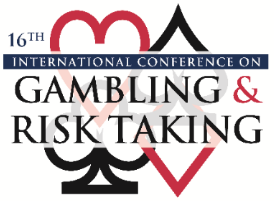Session Title
Session 3-3-E: Online Gaming Customers, Consumption, and Behaviors
Presentation Type
Event
Location
The Mirage Hotel & Casino, Las Vegas, Nevada
Start Date
9-6-2016 2:00 PM
End Date
9-6-2016 3:30 PM
Disciplines
Behavioral Economics | Econometrics | Economics
Abstract
This presentation produces an overview of online horse race bettors’ betting behavior in the Finnish betting market. The following studies have utilized individual-level online betting data LaPlante et al. (2006), LaBrie et al. (2007), LaBrie et al. (2008), LaPlante et al. (2009), Xuan & Shaffer (2009), Braveman & Shaffer (2010), Dragicevic et al. (2011), Fiedler (2013) and Gainsbury & Russell (2013). These studies focus on sports betting, poker and casino games. As an addition to the betting behavioural literature, this study focuses on horse race betting by utilizing betting data provided by Fintoto Ltd which has a legal monopoly for horse race betting in Finland. The data consist of all race-level bets and transactions made on Fintoto’s online betting platform (www.fintoto.fi) from August 1st to August 30th 2012 on a daily basis. Dataset consists of nearly 19 000 different bettors whose behavior is tracked at the individual-level. There are three stages in the study. First, betting behavior is analyzed with summary statistics and medians of calculated variables such as players’ bet amounts, the number of bets and the net profit of bets. Medians are used because the preliminary analysis of the dataset suggested that bettors are heterogeneous in such a manner that most of them bet moderately, but some of them are very active. The median bettor wagers four times, makes 51 bets and spends 58 euro in a month. Second, descriptive regressions, where bet amounts are explained with the demographic variables (age, sex, living in a city, etc.), are carried out in the second stage to model bettors’ characteristics. Due to the heterogeneity of bettors, quantile regression analysis, where estimation is done for each quantile, is applied. The main results of the quantile regression analysis are that the most active players live in cities, and that age has a positive impact on the bet size, but this impact decreases with age. Third, we analyzed the most active ten percent of players, referred to as the group of heavy bettors, with a probit model where the dependent variable is dichotomous equalling one if an individual belongs to the group and zero otherwise. The results suggest that middle-aged males have a higher chance of belonging to the group of heavy bettors than young male bettors.
Keywords
online gambling, horse race betting, individual-level data, descriptive statistics, quantile regression analysis, heterogeneity, probit model, heavy bettors
Streaming Media
Empirical study of Online Horse Race Bettors Betting Behavior in Finland
The Mirage Hotel & Casino, Las Vegas, Nevada
This presentation produces an overview of online horse race bettors’ betting behavior in the Finnish betting market. The following studies have utilized individual-level online betting data LaPlante et al. (2006), LaBrie et al. (2007), LaBrie et al. (2008), LaPlante et al. (2009), Xuan & Shaffer (2009), Braveman & Shaffer (2010), Dragicevic et al. (2011), Fiedler (2013) and Gainsbury & Russell (2013). These studies focus on sports betting, poker and casino games. As an addition to the betting behavioural literature, this study focuses on horse race betting by utilizing betting data provided by Fintoto Ltd which has a legal monopoly for horse race betting in Finland. The data consist of all race-level bets and transactions made on Fintoto’s online betting platform (www.fintoto.fi) from August 1st to August 30th 2012 on a daily basis. Dataset consists of nearly 19 000 different bettors whose behavior is tracked at the individual-level. There are three stages in the study. First, betting behavior is analyzed with summary statistics and medians of calculated variables such as players’ bet amounts, the number of bets and the net profit of bets. Medians are used because the preliminary analysis of the dataset suggested that bettors are heterogeneous in such a manner that most of them bet moderately, but some of them are very active. The median bettor wagers four times, makes 51 bets and spends 58 euro in a month. Second, descriptive regressions, where bet amounts are explained with the demographic variables (age, sex, living in a city, etc.), are carried out in the second stage to model bettors’ characteristics. Due to the heterogeneity of bettors, quantile regression analysis, where estimation is done for each quantile, is applied. The main results of the quantile regression analysis are that the most active players live in cities, and that age has a positive impact on the bet size, but this impact decreases with age. Third, we analyzed the most active ten percent of players, referred to as the group of heavy bettors, with a probit model where the dependent variable is dichotomous equalling one if an individual belongs to the group and zero otherwise. The results suggest that middle-aged males have a higher chance of belonging to the group of heavy bettors than young male bettors.


Comments
Attachment: PDF containing 11 slides